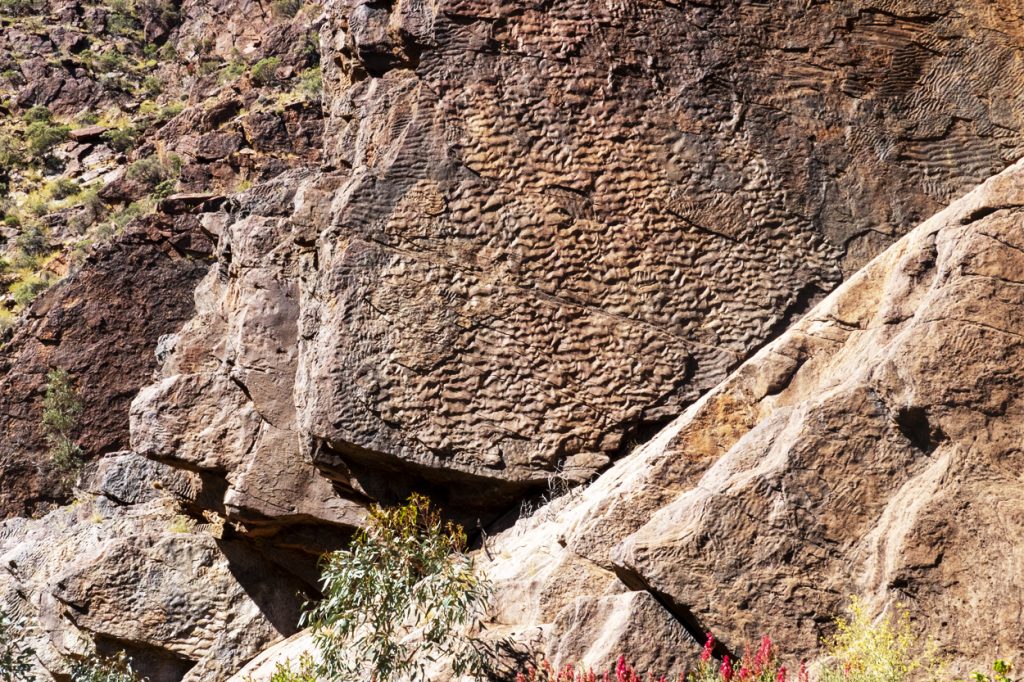
In my post ‘The Red Centre’, I mentioned that I was intrigued by the geology of Uluru and Kata Tjuta and that I would write a post with some basic explanations about their similarities and differences and some more photographs. Well, here it is!
Both Uluru and Kata Tjuta have long been major landmarks in the middle of the red centre landscape as well as places of significance for the traditional owners. At first sight their colour gives the impression that they are very similar, but their shapes are quite different. Also, from a distance, their rock structure looks similar, but on closer inspection the difference is quite obvious.
I have gleaned the following information from two sources, as well as from the interpretation signage located along tracks at both sites. The first source is ‘Uluru and Kata Tjuta: a geological guide’ (authors, I P Sweet, A J Stewart & I H Crick) and the second is ‘The Centre, The natural history of Australia’s Desert Regions’ (Author, Penny van Oosterzee)
During the period between 800 and 350 million years ago, a shallow sea, the Centralian Superbasin, covered much of the central area of Australia. It was effectively a depression in the earth’s crust and, as such, large amounts of sediment filtered into it by rivers from adjacent land (often to depth of 3 to 4 km). Due to the increasing weight of this layer, water was eventually squeezed out and the sediment compressed to form sedimentary rocks and other formations such as rock salt, shale and mudstone.
Around 570 million years ago, a zone within the basin was raised up, exposing the strata to be exposed to erosion, resulting in what is now Uluru and Kata Tjuta (this is a very simplistic description of a complex process).
Uluru

As opposed to the popular view that Uluru is a giant boulder and a monolith, it is the exposed tip of a huge vertical body of rock, extending many kilometres below the surface and forming part of the earth’s crust. However, it comprises a single type of rock – a type of sandstone known as Arkose, comprising compressed sand, granules and small pebbles, no larger than 4 mm. These granules comprise a mixture of Feldspar, Basalt, Iron Oxide, Quartz and Biotite.
Water erosion that has created the many ‘folds’ in the Rock continues to this day:
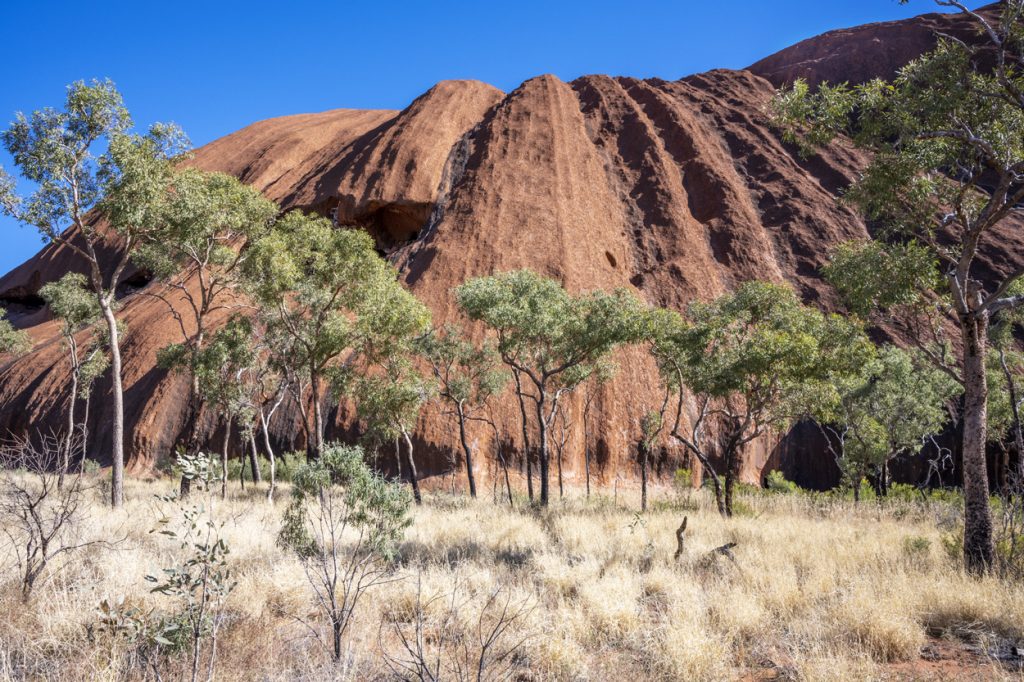

Water pouring down the surface when it rains also creates cascades of pools that increase in size towards the base:
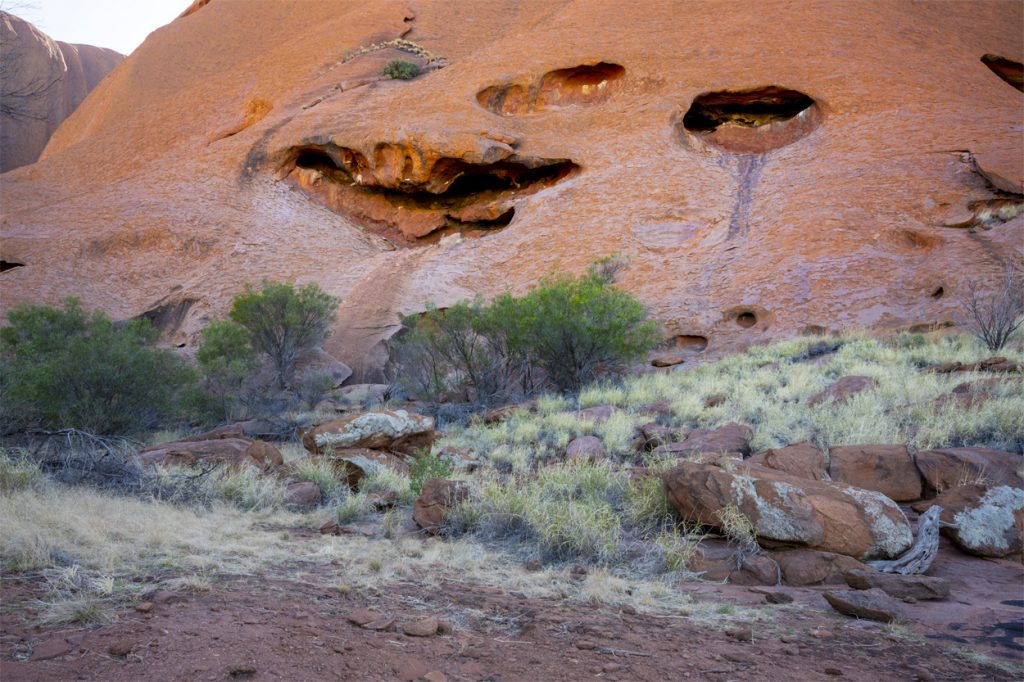
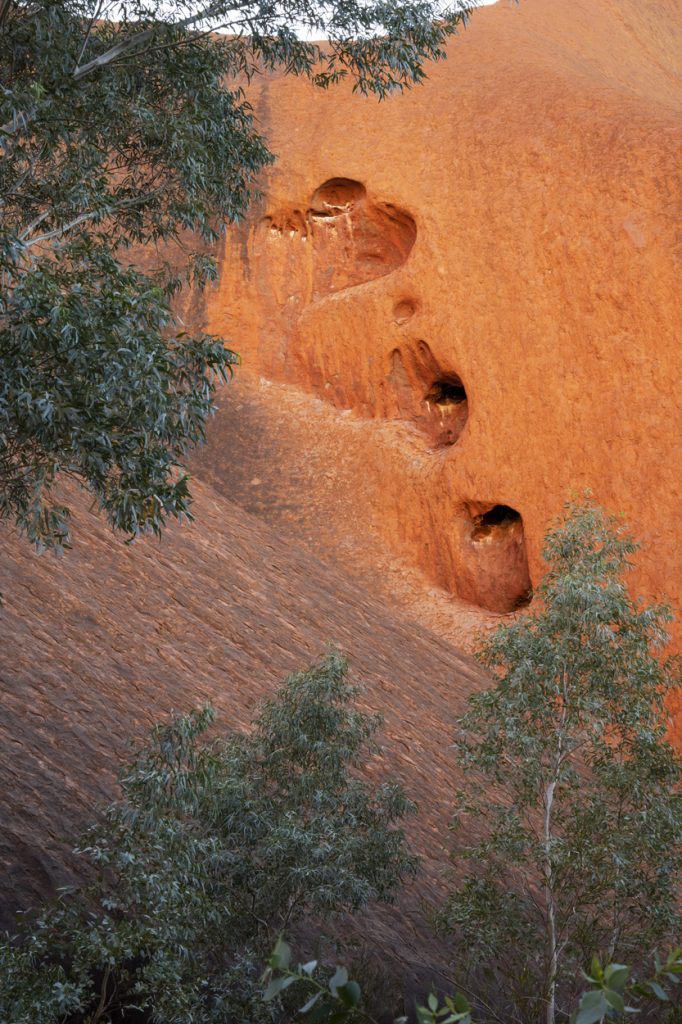
Water seeping into the cracks and fissures eventually results in large sections breaking away and/or forming caves:
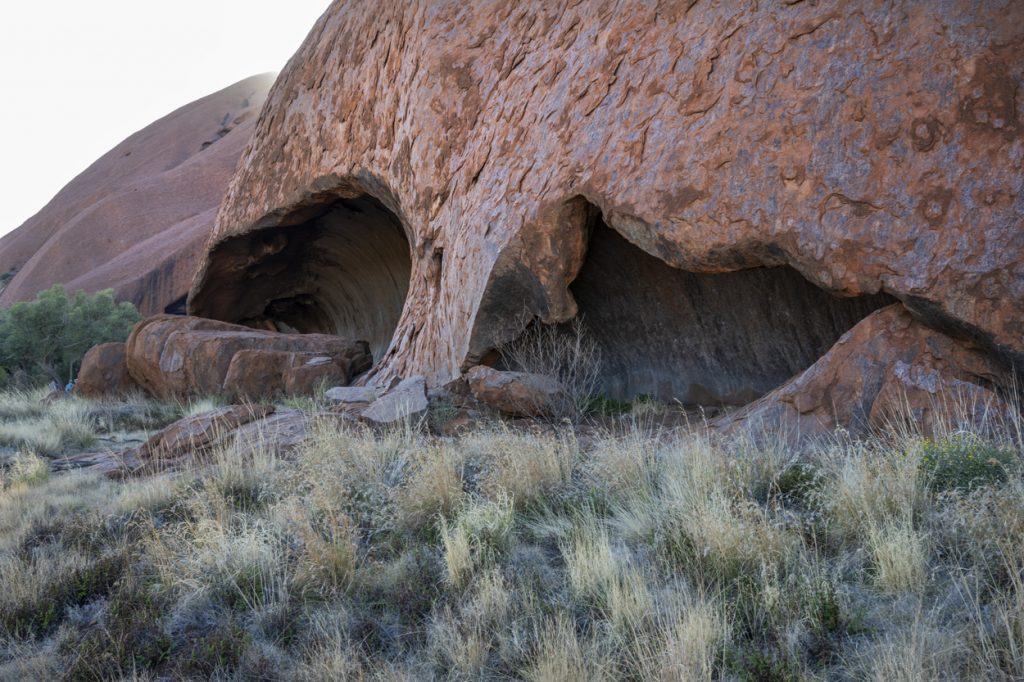

These images also show the change to the colours depending on how the light hits the rock and the changing values during the day.
Kata Tjuta

Kata Tjuta differs from Uluru, not just in shape, but in the composition of the rock. This is commonly known as conglomerate (much like the rock formations that can be seen in Riddells Creek’s Conglomerate Gully), comprising very large pebbles, cobbles and boulders, mainly of granite and basalt.
What seems to make the difference in shape is the effect of erosion. Kata Tjuta was formed in an area of many rivers, whereas Uluru lies in the alluvial flood plains. There also seems to be large variations in the hardness of the conglomerate, with the softer areas eroding faster. Of course, wind had a major part to play in the formation of the domes.
Large ‘boulders’ of conglomerate broken from the main ‘rocks’ are scattered along the Valley of the Winds walking track:
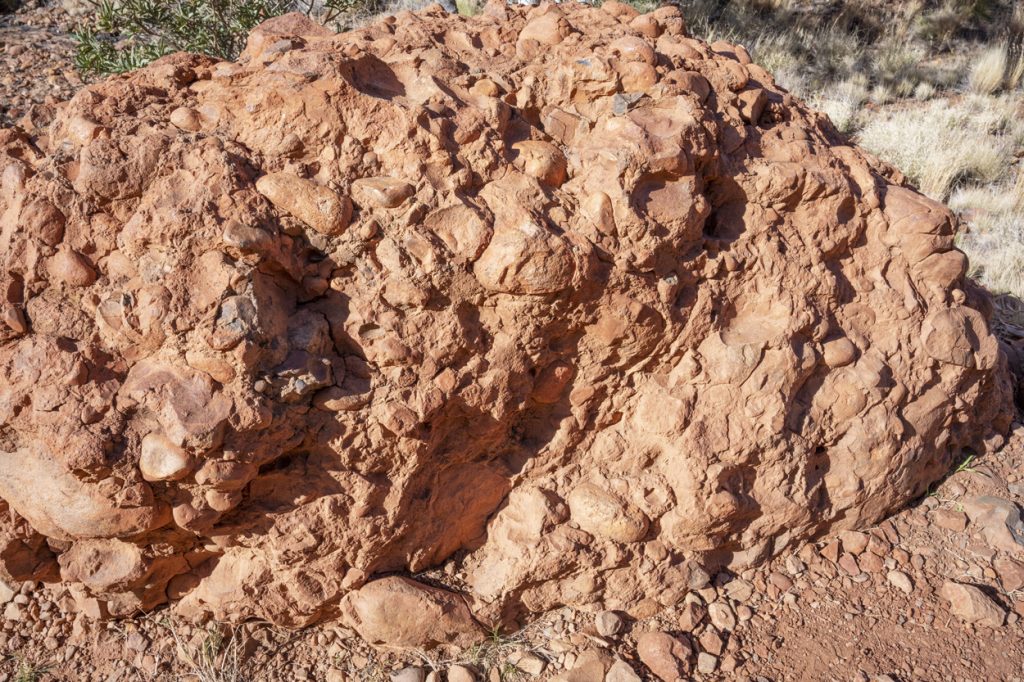
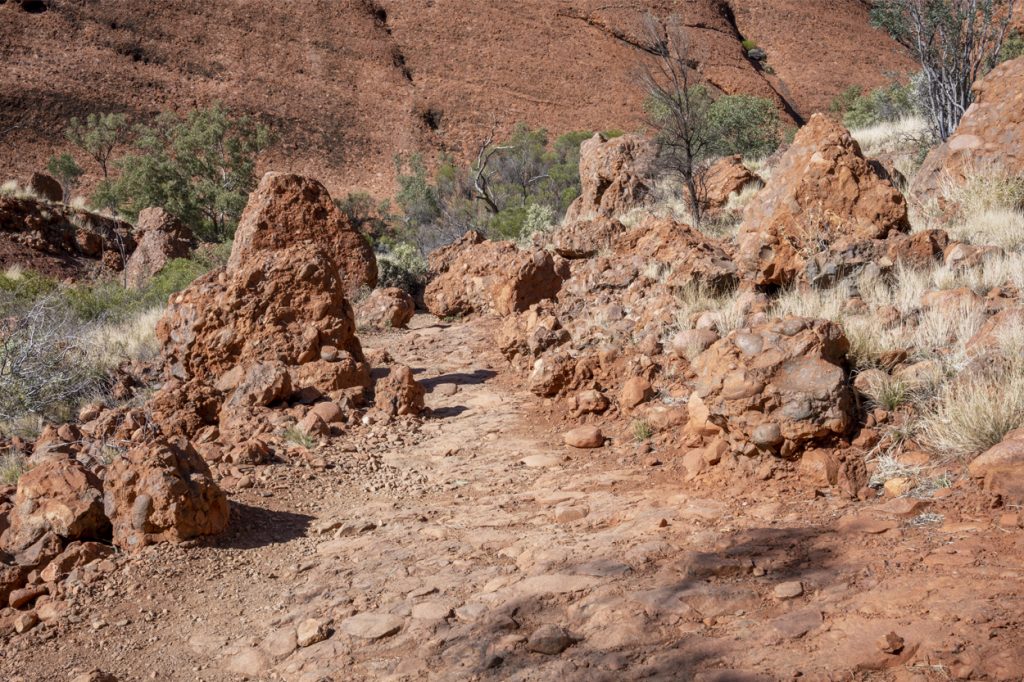
The unique shapes of Kata Tjuta, viewed from the Valley of the Winds walking track:
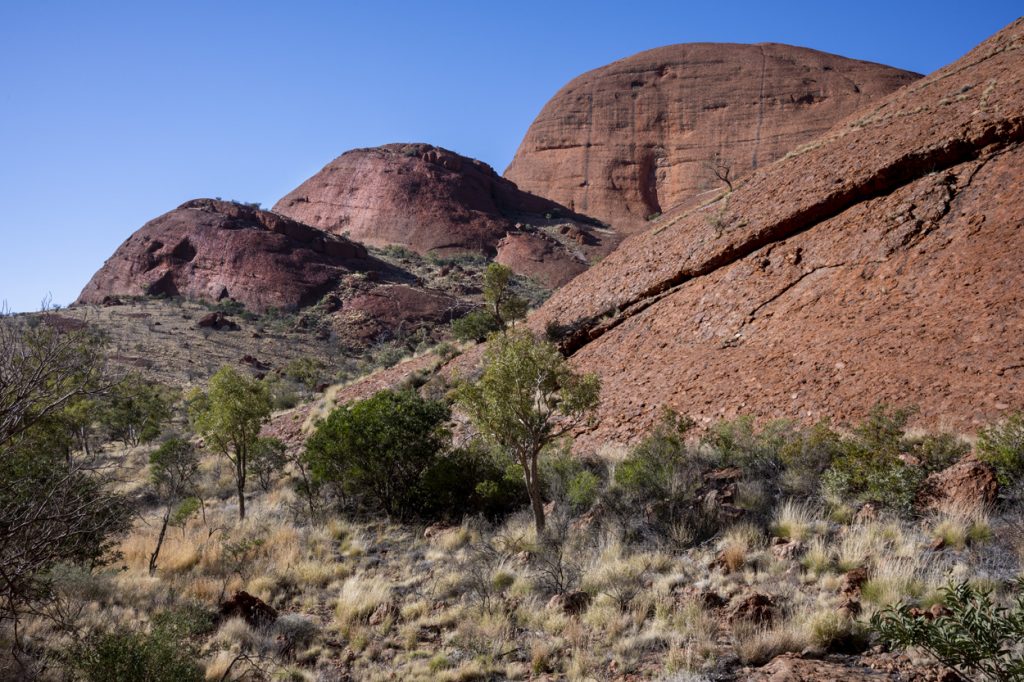

Water plays its part in erosion, much like Uluru:
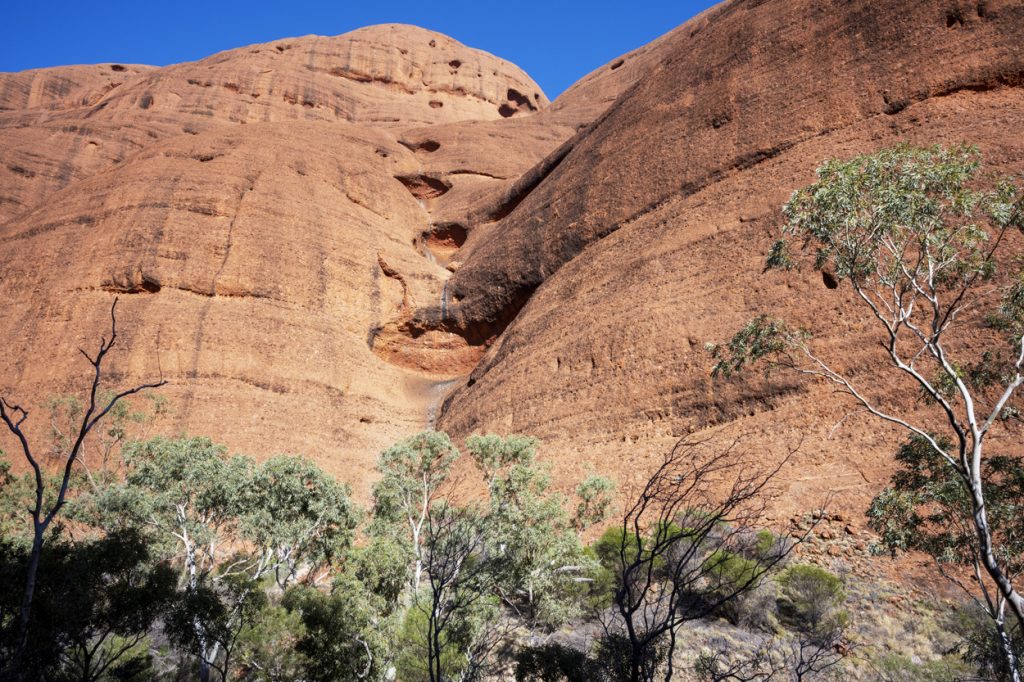
The Centralian Superbasin
I thought it relevant to include some evidence of this major inland sea that existed during the period 800 million to 350 million years ago. As mentioned earlier large amounts of sediments flowed into this. Then the land rose, with parts being forced from a horizontal orientation to almost vertical. This has resulted in many instances of fossilised sediment that shows ripples in the rock, such as at Kings Canyon and Arkaroola (Flinders Ranges):

